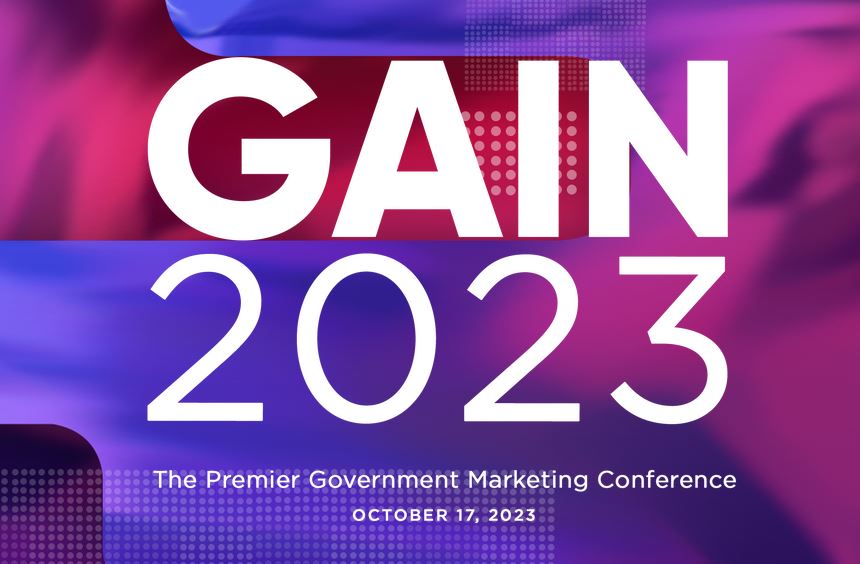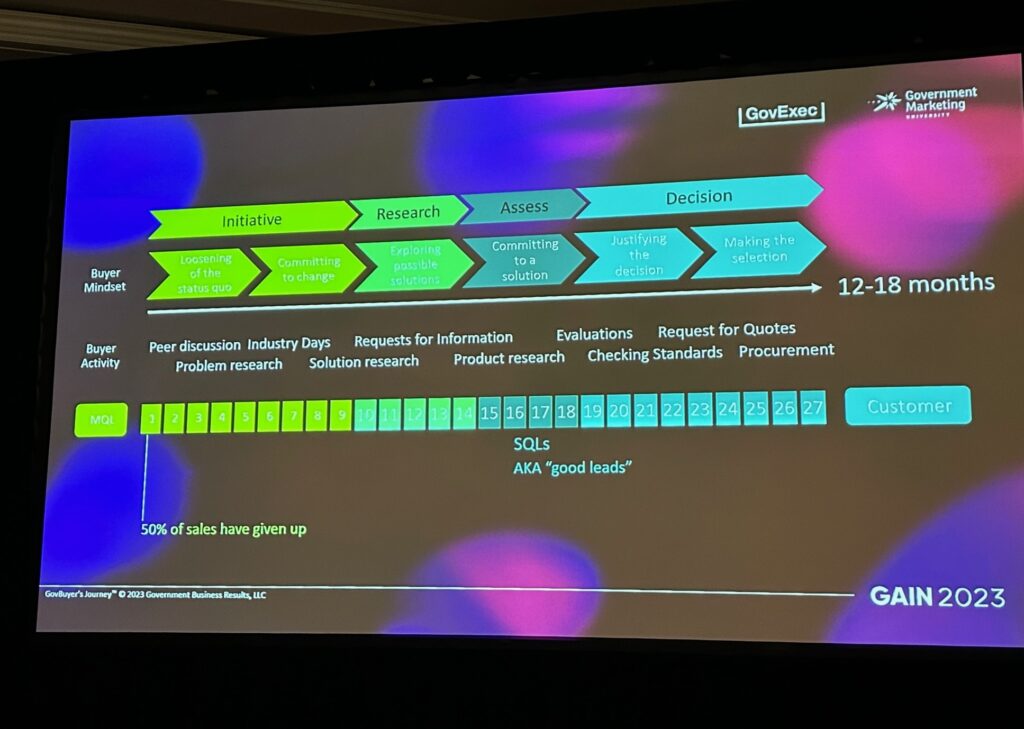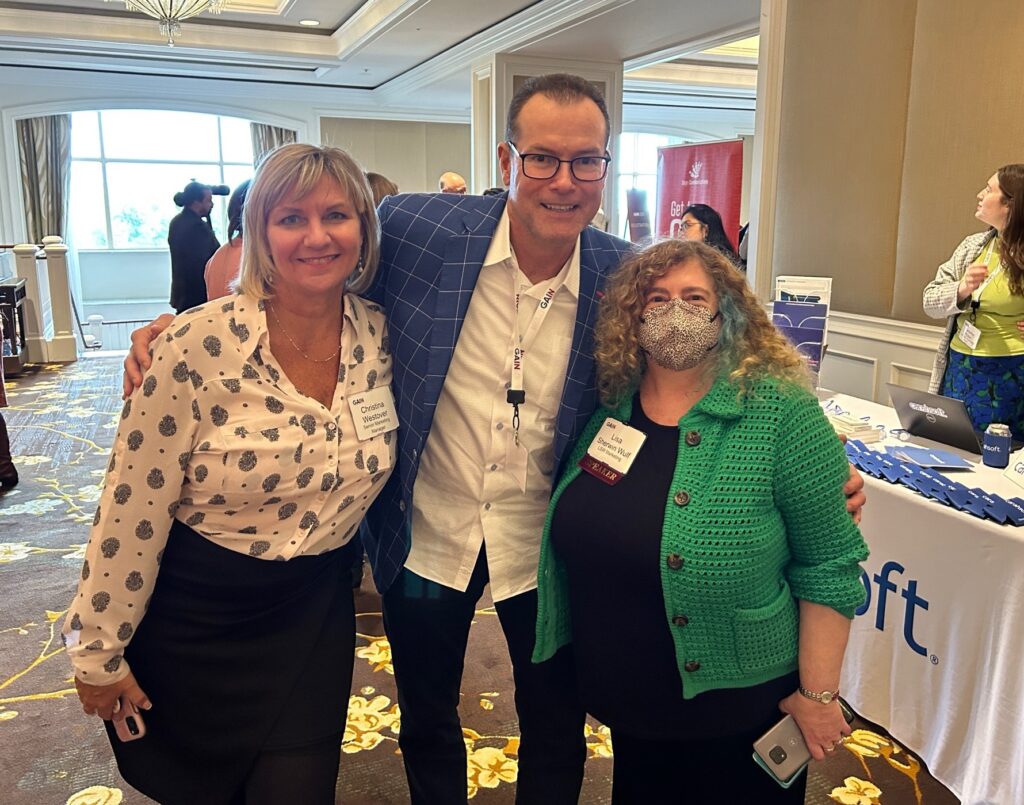
Recently I attended the GAIN 2023 conference, an event dedicated to business-to-government (B2G) marketing. I’ve attended GAIN since it began in 2016, sponsored by Government Marketing University. In 2021 GovExec purchased GMarkU and produced this year’s event.
Attendance seemed strong and fully recovered from depressed pandemic levels. Many of the speakers and presentations were excellent. I can’t do the whole show justice, but here are some useful GAIN 2023 nuggets that stood out to me. Plus some links if you’d like to explore further.
The opening presentation was on Artificial Intelligence and how to use it to become a next-generation government marketer. Paul Roetzer of the AI Marketing Institute gave a talk that was a mixture of thought-provoking predictions and practical AI tips. Such as:
• ChatGPT is just the tip of iceberg. 80% of KW will be intelligently automated to some degree in 1-2 years.
• How to best start experimenting with AI? Problem-based vs. Use Case model. Problem-based is using AI to solve known pain point, use case is quick-win pilot project, must be data driven, repetitive, predictive and generative.
•There are so many new tools to try! ChatGPT now includes DALLE-3, Imagen, new AI features added to Zoom, Runwayml.com, descript.com, Microsoft CoPilot.
Well-known B2G practitioners Lisa Sherwin Wulf and Monica Mayk shared their perspectives on making the most of your B2G marketing resources and budget.
•Timelines and measures of B2B vs. B2G success are very different – align with Sales and Marketing on KPI from beginning, know corporate rules, operational vs. campaign funds, find money from other departments and projects – OPM stands for other people’s money
•Park money with partners and vendors
•Know your tech stack and KPIs
•Hire internal when you can, keep stable of freelancers and vendors
•Leverage corporate PMMs who want to learn PS
•Remember that industry expertise is costly but critical
Allan Rubin and Guy Timberlake shared a detailed methodology for understanding the federal buying journey. The 7-Step process from the Defense Acquisition University helps marketers know when to engage federal decision-makers with their content and differentiators.

•GET IN FRONT – if you wait until the opportunity is announced (RFP stage), you’re already at step 5
•Understand the DAU 7-Step process
•Become familiar with the Shipley Method
•Share informative, vendor-agnostic info throughout the entire process, builds trust and differentiates
Aaron Heffron then shared some research on the media habits of the public sector buyer. Aaron is, President of Research and Forecasting at GovExec, and formerly President of Market Connections before its purchase by GovExec in 2022. Most of the information was familiar to those who purchased the M4PS research earlier this year, but there were some interesting items.
•Drive time is back, and WTOP is #1
•Customer testimonials way down in credibility – not known was has caused this, perhaps poor quality or overuse?
•Newsletters are big in SLED
•66% feds listen to podcasts, up from 56% in 2022
•GovExec top digital site for 38% of civilian and 39% of Defense

Juliana Slye of B2G strategy firm GBR and Molly Tomevi of Carahsoft did a presentation on the Government Buyer’s Journey. Spoiler alert – it’s long.
•Something must first happen that knocks government out of status quo before it wants to make a purchase
•Process takes at least 12-18 months
•According to Forrester – 13 pieces of content consumed for a B2B purchase, 27 touchpoints for B2G
•A MQL does not become a SQL until step 16-17
•44% of millennials want a purely digital sales experience, no humans (Gartner)

Finally, it wouldn’t be GAIN without a lot of networking with peers and prospects. Hope these nuggets are helpful and see you there next year!
